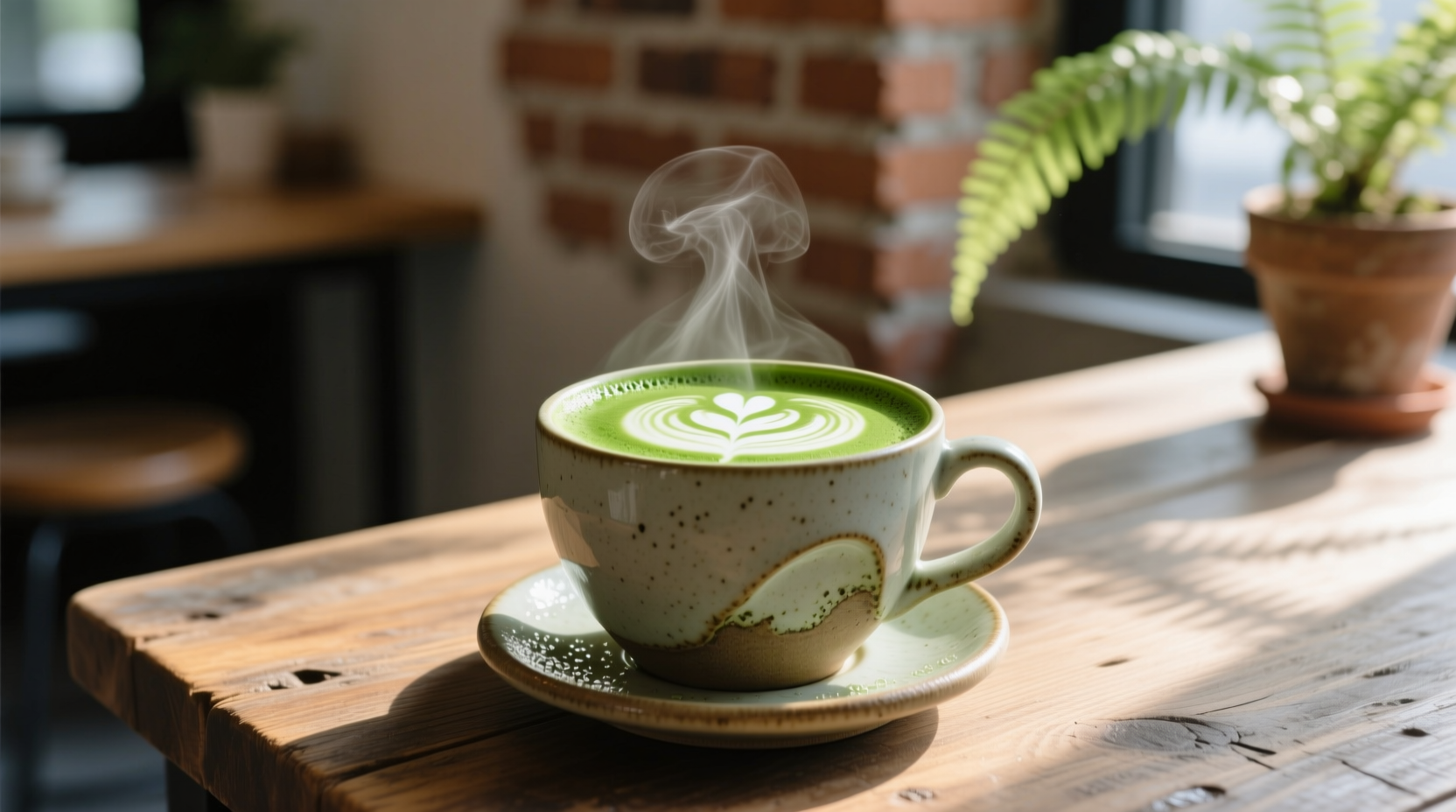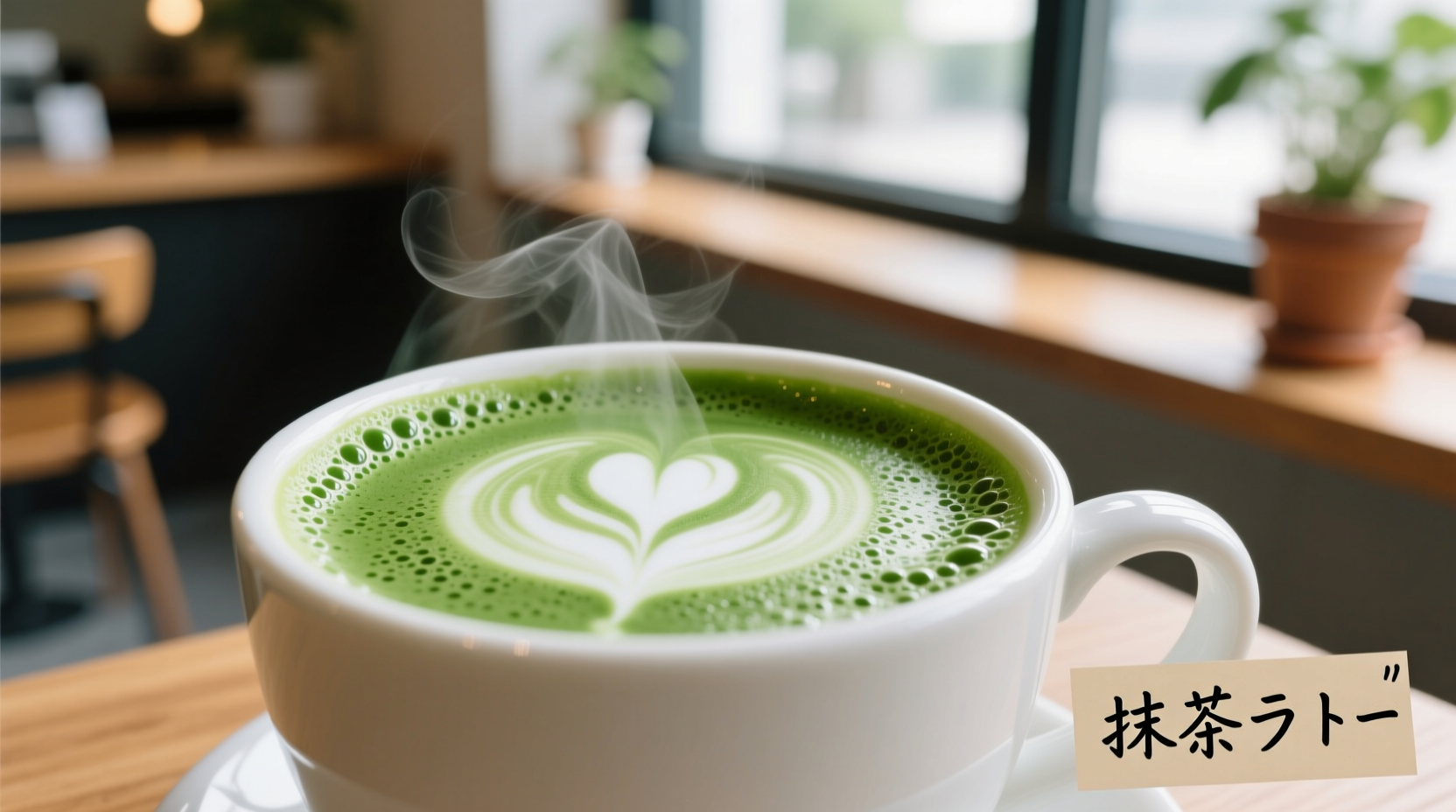Curious about that vibrant green drink everyone's ordering? You're not alone. As matcha lattes have surged in popularity from specialty cafes to home kitchens, understanding their unique flavor profile helps you appreciate what makes this beverage special. Whether you're considering your first sip or trying to perfect your homemade version, knowing exactly what does matcha latte taste like transforms your experience from uncertain to enlightened.
The Core Flavor Experience: Beyond "Green Tea"
When you take your first sip of a properly prepared matcha latte, you'll notice several distinct flavor components working together:
- Grassy/vegetal notes - Similar to fresh spinach or young bamboo shoots
- Umami richness - That savory depth reminiscent of seaweed or mushrooms
- Subtle sweetness - Naturally occurring in high-grade matcha, not from added sugar
- Marine undertones - A clean, ocean-like freshness (especially in premium matcha)
- Creamy mouthfeel - From the steamed milk that rounds out the experience
Unlike regular green tea where leaves are steeped then removed, matcha involves consuming the entire ground tea leaf. This creates a more intense, full-bodied experience that explains why does my matcha latte taste different than green tea. The texture is noticeably thicker and more substantial.
What Creates Matcha Latte's Unique Taste Profile?
Several factors determine exactly what flavor notes are in a matcha latte and how pronounced they appear:
Matcha Quality: The Foundation of Flavor
Ceremonial grade matcha (the highest quality) delivers a smooth, naturally sweet profile with minimal bitterness. Culinary grade often contains more bitterness and astringency. The difference comes from:
- Shade-growing process - Premium matcha is shaded for 20-30 days before harvest, increasing chlorophyll and L-theanine
- Leaf selection - Only youngest, most tender leaves are used for ceremonial grade
- Stone grinding - Traditional granite mill produces finer, cooler powder that preserves flavor
Milk Selection: How It Modifies the Flavor
The type of milk significantly impacts how to make matcha latte less bitter and the overall balance:
| Milk Type | Flavor Impact | Best For |
|---|---|---|
| Whole dairy | Creates richest mouthfeel, balances bitterness | Traditional matcha latte experience |
| Oat milk | Natural sweetness enhances matcha's vegetal notes | Vegan option with best flavor compatibility |
| Almond milk | Can create slightly bitter aftertaste | Low-calorie option (use unsweetened) |
| Soy milk | Protein content creates excellent foam, neutral flavor | Classic vegan alternative |
Matcha Latte vs. Other Popular Beverages
Understanding what does a matcha latte taste like compared to coffee helps set proper expectations:
- Coffee - Bitter, roasted notes vs. matcha's vegetal, fresh profile
- Regular green tea - Lighter, more delicate vs. matcha's full-bodied intensity
- Chai latte - Spiced sweetness vs. matcha's natural umami
- Barista green tea latte - Often uses lower-grade tea with added flavors vs. authentic matcha
Unlike coffee's sharp bitterness, matcha offers a more complex bitterness that balances with natural sweetness when prepared correctly. This explains why many coffee drinkers transition to matcha lattes for a gentler caffeine experience with complementary flavors rather than competing elements.

When Matcha Latte Might Taste "Off": Context Boundaries
Several factors can dramatically alter why does my matcha latte taste bitter beyond normal expectations:
- Water temperature - Using boiling water (above 175°F/80°C) scalds matcha, creating harsh bitterness
- Storage conditions - Exposure to light, air, or moisture degrades flavor within weeks
- Expired product - Matcha loses vibrancy after 6-8 weeks once opened
- Improper whisking - Clumpy matcha creates uneven flavor distribution
According to research from the USDA Agricultural Research Service, proper storage of matcha in airtight containers away from light preserves catechin levels that contribute to its characteristic flavor profile. When stored correctly, high-quality matcha maintains optimal flavor for 3-4 months in the refrigerator.
Timeline: How Matcha's Flavor Perception Evolved in Western Culture
Understanding the historical context helps explain modern flavor expectations:
- 1191 - Matcha introduced to Japan by Zen Buddhist monk Eisai
- 1990s - First appearances in US health food stores as dietary supplement
- Early 2000s - Specialty tea shops begin serving traditional matcha preparations
- 2010-2015 - Coffee chains introduce matcha lattes, creating Westernized sweetened versions
- 2018-Present - Growing appreciation for authentic ceremonial grade matcha with less added sugar
This evolution explains why many people's first experience with does matcha latte taste like green tea was a heavily sweetened version that masked matcha's natural complexity. Today's premium matcha lattes showcase the ingredient's authentic flavor profile with minimal sweetening.
Practical Tips for the Best Matcha Latte Experience
Now that you understand what makes a matcha latte taste good, here's how to ensure optimal flavor:
- Use proper water temperature - 160-175°F (70-80°C) preserves delicate flavors
- Measure precisely - 1-2 grams matcha (1-2 tsp) per 8oz milk creates balanced flavor
- Sift before mixing - Prevents clumping for smooth texture
- Add sweetness thoughtfully - Honey or maple syrup complements better than refined sugar
- Try temperature variations - Iced versions highlight different flavor notes than hot
Professional baristas at the Specialty Coffee Association note that the ideal matcha-to-milk ratio varies by personal preference, but starting with 1.5 grams matcha to 8 ounces of milk provides a balanced introduction to authentic matcha flavor without overwhelming bitterness.











 浙公网安备
33010002000092号
浙公网安备
33010002000092号 浙B2-20120091-4
浙B2-20120091-4